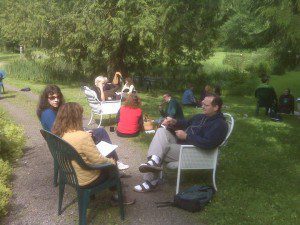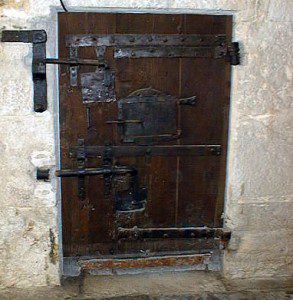
Don’t let anybody tell you what your dream, or your life, means. Dreams are power-full, and you don’t want to give this kind of power away. Similarly, an awakened life requires us to become the authors of meaning in our own world.
Of course, dreams can be obscure or mystifying. We may need help to begin to figure out what was going on in a certain dream, and what action it requires. But instead of turning to the kind of book where you look up dream symbols, or the kind of person who pretends to authority over other people’s dreams, we want to learn to give and receive helpful feedback in a friendly, non-authoritarian, and mutually empowering way.
Fortunately, we have a protocol that helps us to do this. It is the gift of a remarkable dream researcher, the late Montague (“Monte”) Ullman. For decades Monte helped to push back the frontiers of our society’s understanding of dreams, observing (in his important work with Stanley Krippner on dream telepathy and precognition) that dreams are “organized by the future more than the past” and that we may be missing essential messages when we fail to examine how a dream may be revealing events that have not yet manifested.
As a clinical psychiatrist, a professor
and an M.D., Monte was used to people asking him to lay down the law and tell them what their dreams meant. Like the storied fisherman who knew it is better to teach someone how to fish than to give them the latest catch, Monte decided that he would renounce the invitation to interpret for others. He suggested that all of us can offer helpful feedback on a dream, without setting ourselves up as gurus or experts, by prefacing our remarks with the phrase “if it were my dream.” When we do this, we make it plain that we are offering our personal projections and associations, which come from our own life expereinec and may or may not be on the money in relation to someone else’s dream.
I have borrowed this protocol and insist on it in all dream-sharing. I will never presume to tell someone else what his or her dream means, and I decline to listen to anyone who believes that they have the right to tell me or anyone else what a dream means, whatever their resume or credentials. At the same time, I am very willing to offer whatever thoughts come to mind in the presence of another person’s dream, ranging from personal life memories and dreams to a stream of associations with a symbol or a “hit” on an unlikely word or location. I love sharing my own dreams with others who are willing to play according to this simple and all-important rule. Over at my online dreamwork forums at Spirituality & Health, I may receive dozens of comments on a single dream, from many different angles, and will often find something helpful and relevant in all of them, since a dream can be many-layered.
When we hear the dreams of others, we often resonate with themes that have featured in our own dreams and get a sense of our shared humanity and a common bank of symbols or archetypes from which humans draw, in their deeper mind. At the same time, any dream is freshly-minted, an individual revelation that must be studied closely for what is new and calibrated to the dreamer, as well as for “universal” motifs. This study will be most rewarding (as I suggested here yesterday) when the dreamer can manage to reenter a dream and gather more information inside the dreamspace.
We need to offer more than feedback. We need to help each other to recognize how to honor our dreams and embody their energy and guidance in regular life. Dreams require action. In my Lightning Dreamwork process, explained in my books Active Dreaming and The Three “Only” Things, the last step is always to come up with an action plan: tell the dream to the spouse, wear the color red, do an internet search for that funny name, draw or write from a dream scene, go on a conscious journey back into the dreamspace.
My next Dreamwork Interactive e-course launches on Monday, August 22, and will bring together a lively global community of active dreamers. Join the fun here.

